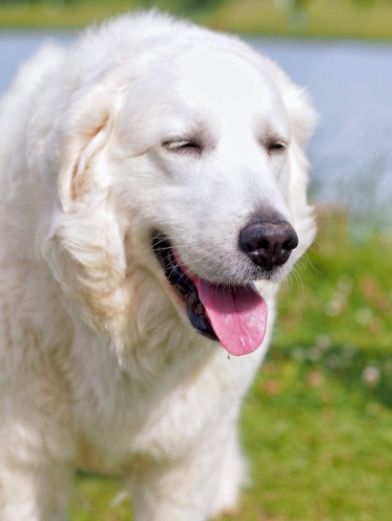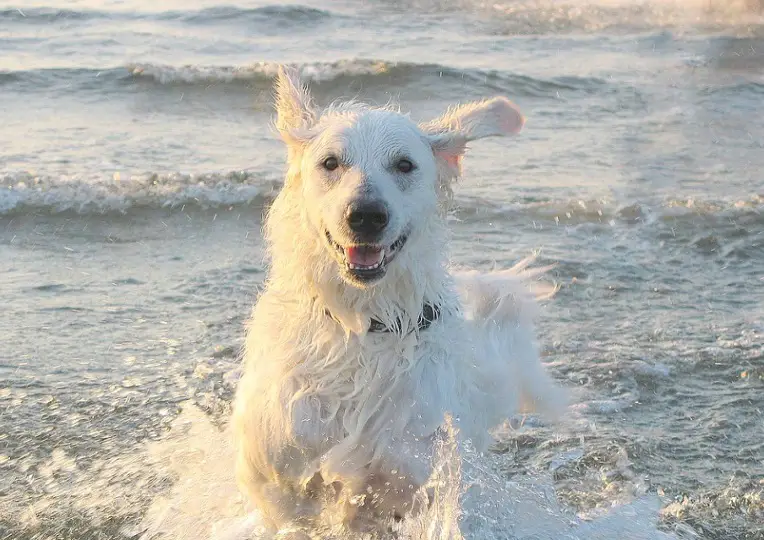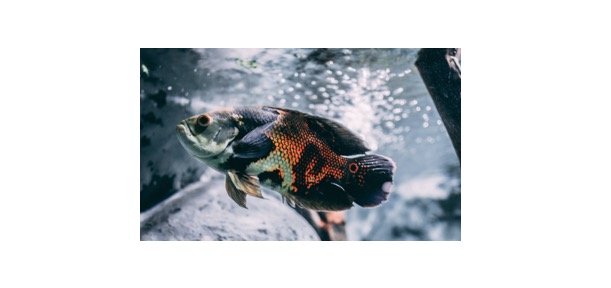Table of Contents
Kuvasz: All You Need To Know
A Kuvasz is the domestic dog breed that belongs to the kingdom of Animalia, phylum Chordata, and class Mammalia. Its genus is Canis, and its species is Canis familiaris. Its length is up to 66 to 76 cm, and it weighs about 31 to 52 kg. It lives in a domesticated habitat and is often used as a guard dog, with a lifespan of up to 10 to 12 years.

What is Kuvasz?
The Kuvasz is a dog breed that was developed to protect cattle. Its friendliness, loyalty, and territoriality, on the other hand, make it a great family guard dog. This breed, which is pronounced “Coo-Vahs,” originated in Hungary and is sometimes mistaken with the Great Pyrenees. Although there are numerous Kuvasz rescues that specialise in the breed, Kuvasz puppies may be rather costly.

Because the Kuvasz was developed to be a guard dog, it is important to start obedience and socialisation training as soon as possible to guarantee that the Kuvasz grows up to be friendly. The breed is sometimes referred to as “aloof,” although this is usually due to its habit of watching for dangers as the “flock” continues to graze.
Because this breed was bred for decades on its capacity to kill smaller canines like coyotes and foxes, it’s important to be cautious while introducing your Kuvasz to new dogs and small animals. Unless it was adequately socialised as a puppy, it may perceive other dogs as a threat.
The Kuvasz vs The Great Pyrenees
Though these two breeds appear to be quite similar at first look, they have a number of characteristics that make them easily identifiable. The Kuvasz is taller, slimmer, and more athletic in general.
The Great Pyrenees, on the other hand, are much thicker and lumbering. Furthermore, the Kuvasz is a superb family dog. The Pyrenees are good at chasing down predators, but they frequently take their job too seriously and become lost.
The Kuvasz, on the other hand, is an outstanding guard dog who rarely ventures too far from home. There are several physical characteristics that might help you distinguish between the two breeds. The Kuvasz only has one dewclaw, while the Great Pyrenees have two.
The Great Pyrenees has a broad, blocky head, but the Kuvasz has a small snout. The Kuvasz is generally entirely white (ivory), whereas the Great Pyrenees’ coat colour is sometimes broken up by grey or beige patterns.
Fun Facts About Kuvasz!
While the Kuvasz is a faithful guard dog and a delightful family companion, few owners realise how much biology this breed can teach us. These fascinating facts demonstrate the Kuvasz’s numerous deep links to crucial biological topics!
Kuvasz: From Predator to Defender
This breed belongs to the “Working Group” of dog breeds, which includes many other good guard dogs. Despite the fact that they are descended from wolves, these breeds have been chosen for millennia for their capacity to prevent wolves from destroying cattle. Surprisingly, this capacity is derived from the same behavioural characteristics that keep wolves in packs together.
A wolf pack is organised like a family; the Alpha male and female lead the pack and oversee the behaviour of the younger members. The wolves defend one another as a pack against much larger predators such as bears, cougars, and even people, thanks to their family tie.
When a wolf is introduced to a completely new social structure as a pup, it might identify with that group as its “pack.” While domesticated dogs no longer follow the strict social structure of a “pack,” several breeds, such as the Kuvasz, exhibit the same defensive instincts that the pack uses to protect its most vulnerable members.
Shepherds who want assistance in guarding their flock will frequently adopt a young Kuvasz puppy. Rather than bonding with a family of other dogs, the young Kuvasz will adopt the flock (of sheep or other livestock) as its pack and will fiercely protect them as it matures. This is true of many working dog breeds, and it is an evolutionary remnant of wolf behaviour!
Dog Breeds Can Go Extinct, Too!
The Kuvasz has a fascinating history, including a period when it was on the verge of extinction. Though the breed is said to have originated in Tibet or possibly ancient Mesopotamia, it was raised as royal guard dogs in Hungary in the late 1600s and gained its distinctive features.
The canines were given away by the King of Hungary at the time to wealthy households, and they spread across Hungary. The Kuvasz was a reasonably popular guard dog in the rural countryside by the time World War II spread throughout Europe.
However, since they make such excellent guard dogs, Nazi forces passing through the area frequently targeted them. By the conclusion of the conflict, just 30 people remained in the entire country. The conflict pushed them to the brink of extinction, as it did many other species.
However, because of the efforts of determined breeders, they have made a significant return since the war’s end.
Kuvasz Citations
- A degenerative encephalomyelopathy in 7 Kuvasz puppies. Can Vet J . 2005 May;46(5):429-32.
- Daily controlled physiotherapy increases survival time in dogs with suspected degenerative myelopathy. J Vet Intern Med . Jul-Aug 2006;20(4):927-32.







